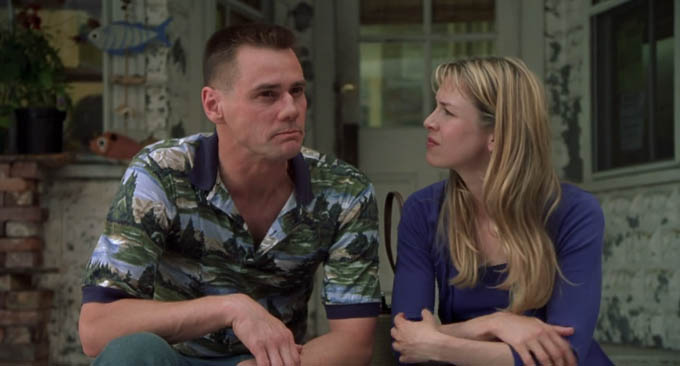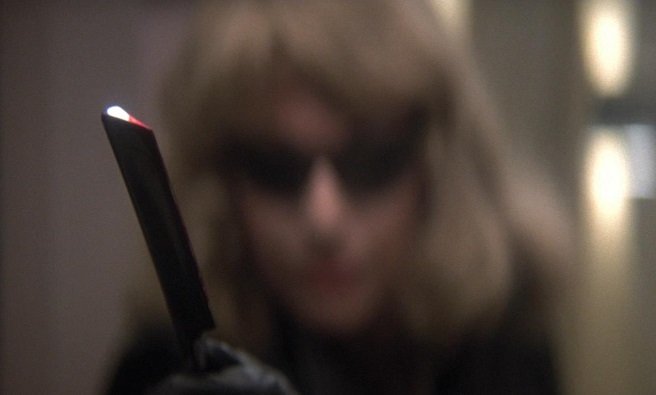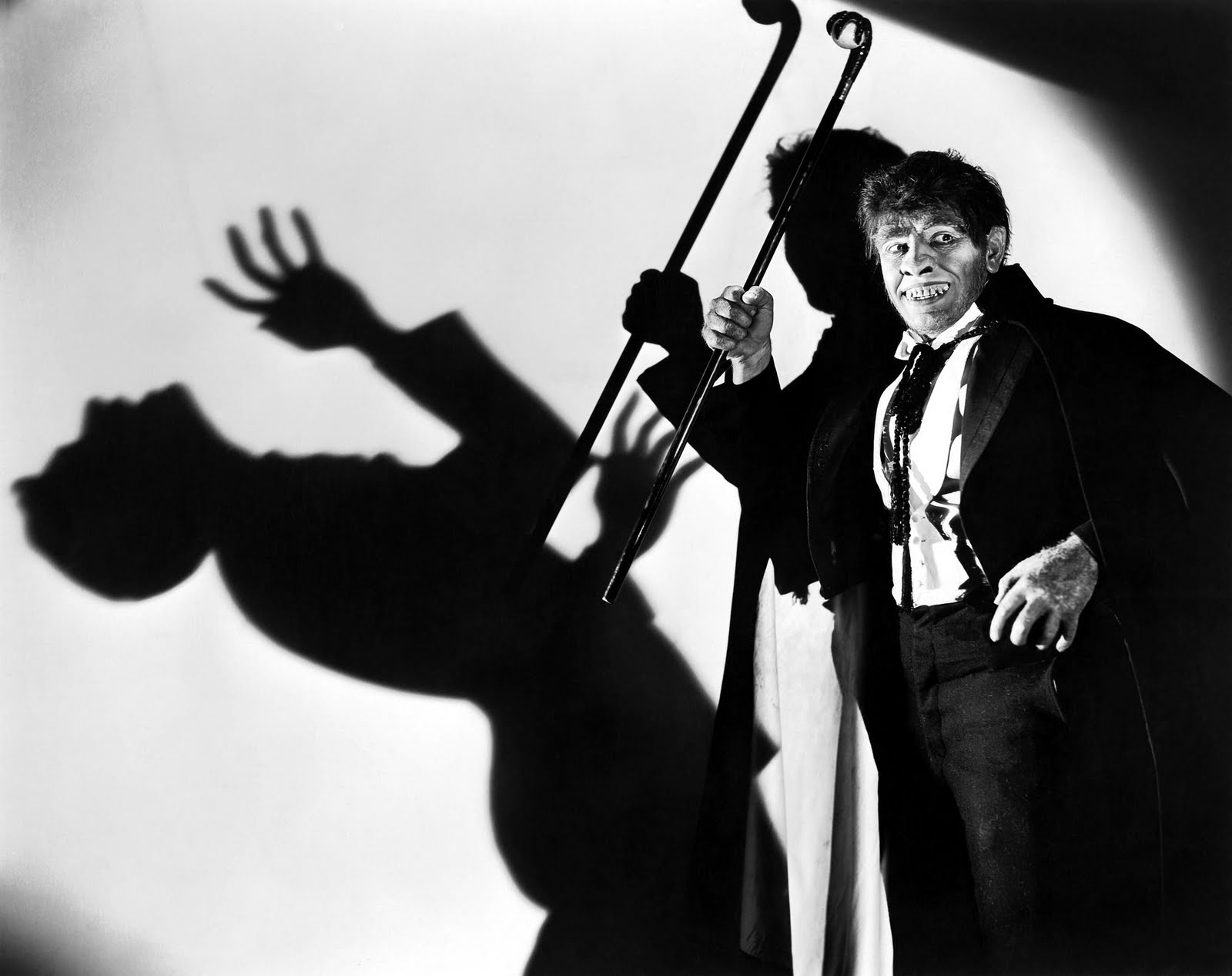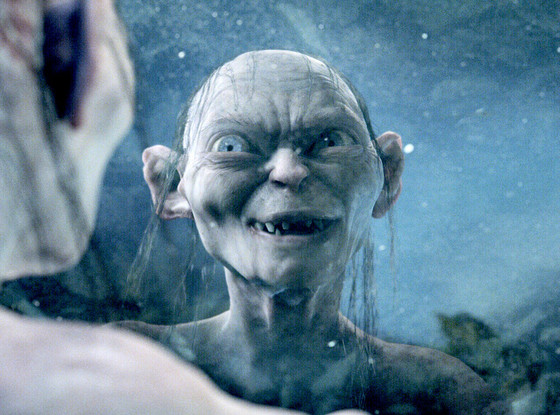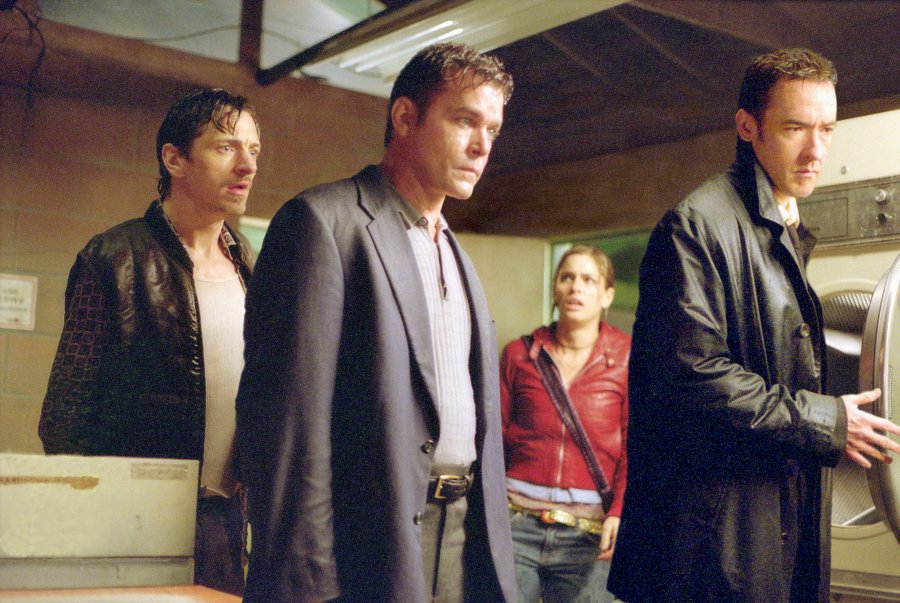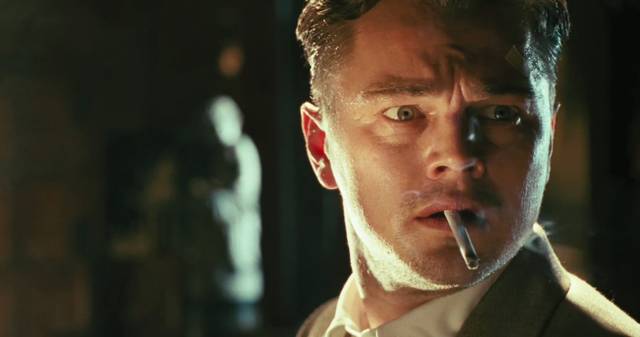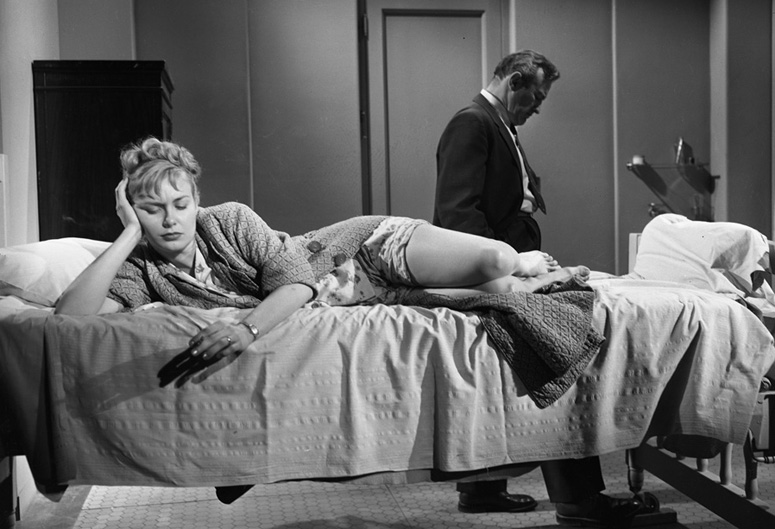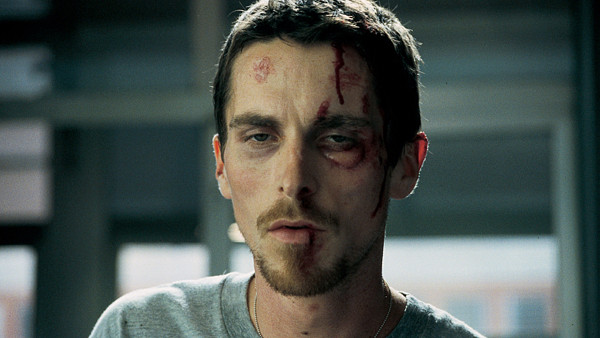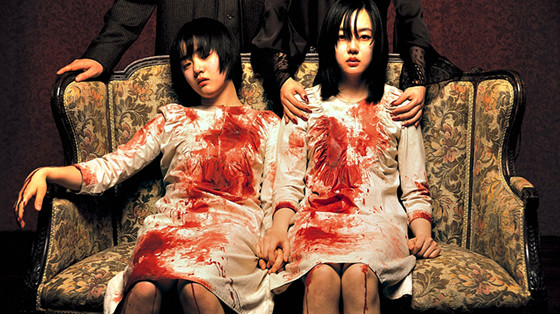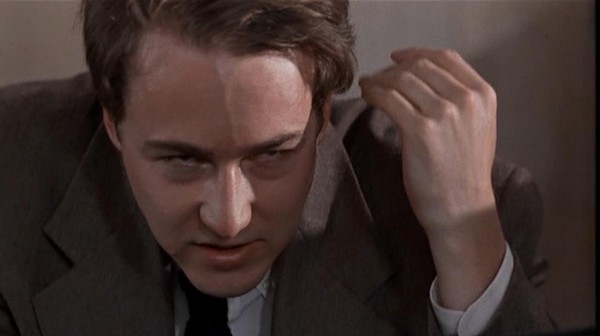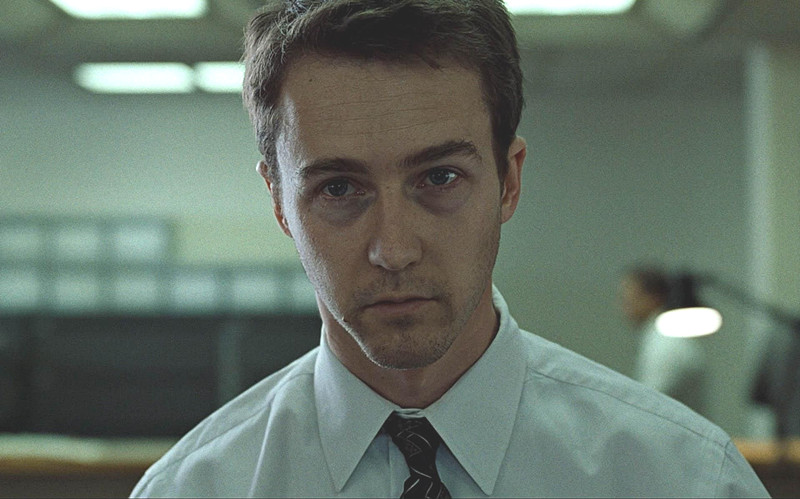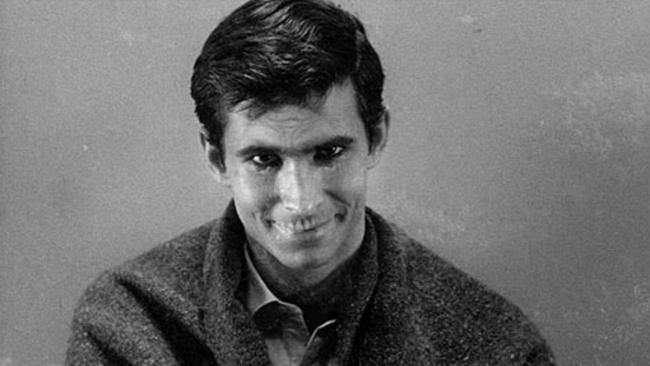Search This Blog
Monday, September 29, 2014
Fifteen Essential Movies Every Aspiring Screenwriter Must Watch
Even if you’re not an aspiring screenwriter and have general interest in extremely good screenplays, these are the basic films whose narrative construction, character development, solid yet mind-blowing plotlines, etc., make for terrific readings and life-changing experiences.
Any good screenwriter should keep in mind the work already done by masters of this craft throughout film history, taking notes of outstanding accomplishments in such works, underlining twists and turns and everything that makes these films so groundbreaking.
This list does exactly that with 15 mostly modern classics that have paved way for today’s market and what we can learn from them, while understanding in what particular aspects they mattered most and its relevance to film culture.
Links to the scripts are listed below each film commentary as an incentive to anyone who wishes to read the words behind some intriguingly brilliant films. Please note that these films are not ranked in any particular order, they are equally essential for those who want to learn something about great screenwriting.
1. Groundhog Day (wri. Danny Rubin & Harold Ramis)
Storyline: “A weatherman finds himself living the same day over and over again.” – IMDb
This genius comedy owes a lot to its clever screenplay. The character development makes them instantly memorable, and its groundbreaking structure paved way for films about people reliving days. It does much more than that. The intriguing part of the story, its concept alone, covers for an even more interesting conclusion and moral.
The one liners, visual gags, smart puns and body humor are brought to life with a great cast, but they don’t make it a pure comedy – they give it the charm and wittiness so inherent to Ramis’ films and underline greater issues. As Phil lives February 2nd again and again, restarting every day at 6am, he has to find a way to break the cycle.
It becomes as exhausting to the audience as it’s, apparently, to the character, but that’s where the film leaves room for constant surprises – because it’s the same day so many times, the outcome is a world of possibilities, what the character chooses to do and how he works through it is distinct almost without trying. Besides, this film is proof that a laugh-provoking comedy can be intelligent and appeal to a broader audience.
Here’s the script for Groundhog Day:
http://www.dailyscript.com/scripts/groundhogday.pdf
http://www.dailyscript.com/scripts/groundhogday.pdf
2. Casablanca (wri. Julius J. Epstein & Philip G. Epstein & Howard Koch)
Storyline: “Set in unoccupied Africa during the early days of World War II: An American expatriate meets a former lover, with unforeseen complications.” – IMDb
This love story is, without doubt, one of the most popular ever made. The screenplay was adapted from an unproduced play called “Everybody Comes To Rick’s”, and the writers just kept going with the original story, not really knowing where to end it.
The writers had the characters very well defined, so they mostly worked the plot around them. We see their viewpoints and their conflicts, how they choose to deal with them and their own memories, in a most brilliant manner that asks them to confront each other in the same place – Casablanca.
There are endless lessons to withdraw from what the characters say, the dialogue is fundamental and the sense of loss, of not knowing where to go, works as something that keeps the film fresh (the last line of the film was added three weeks after shooting ended). The fact that these flawed characters make us so attached to them, is on its own a spectacle. And even though “Play it again, Sam” is not a real quote from this film, you can read the actual script and learn just how good it is without that line.
Here’s the script for Casablanca:
http://www.weeklyscript.com/Casablanca.txt
http://www.weeklyscript.com/Casablanca.txt
3. Citizen Kane (wri. Herman J. Mankiewicz & Orson Welles)
Storyline: “Following the death of a publishing tycoon, news reporters scramble to discover the meaning of his final utterance.” – IMDb
Welle’s classic masterpiece follows the life of wealthy publishing magnate Charles Foster Kane. Known for its innovations in photography, editing and sound, its narrative techniques take over this perfect debut. The collaboration with Herman J. Mankiewicz and an uncredited John Houseman cause great controversy even before it premiered, for appearing to caricaturize people and actual events from the life of newspaper magnate William Randolph Hearst.
This first-time director and heavy drinker was, by that time, adored by the radio and stage, having been authorized by RKO Radio Pictures to make any picture he wished. The writing of the script evolved into what became an extremely complex structure that continuously gains depth, not caring about normal progression of time or ever allowing the audience to expect anything. Nevertheless, it is emotional and powerful and always notorious, with a script that is peculiar right until the end.
Here’s the script for Citizen Kane:
http://www.weeklyscript.com/Citizen%20Kane.txt
http://www.weeklyscript.com/Citizen%20Kane.txt
4. Annie Hall (wri. Woody Allen & Marshall Brickman)
Storyline: “Neurotic New York comedian Alvy Singer falls in love with the ditsy Annie Hall.” – IMDb
The tone is established with Woody Allen’s neurotic, Jewish, intellectual main character, a stand-up comic and writer who contains wit and cultural references enough to get the attention of goofy Annie Hall. Originally, there was a murder mystery subplot, but that would mark the beginning of a completely different career (although he did other work before, it wasn’t as flashy).
What would seem like a reasonably simple story about dating and philosophy in the 70’s turned into a whirlwind of insecurities brought up by people constantly talking. This became so important in films to follow – how someone could just spend an entire film babbling and exasperating. A lot of other Woody Allen films involved similar onscreen girlfriends, who grew tired of him in different ways.
The perfection of his speeches are undeniable, brilliantly accomplished in one take and always aiming towards a joke or a revelation. It’s the basic and ultimate proof that lack of action doesn’t mean lack of story or apparent development.
Here’s the script for Annie Hall:
http://www.weeklyscript.com/Annie%20Hall.txt
http://www.weeklyscript.com/Annie%20Hall.txt
5. Pulp Fiction (wri. Quentin Tarantino & Roger Avary)
Storyline: “The lives of two mob hit men, a boxer, a gangster’s wife, and a pair of diner bandits intertwine in four tales of violence and redemption.” – IMDb
This one may seem as obvious as it gets for modern screenwriters, but it is in fact very often disregarded by more experienced writers, as it defies established methods and doesn’t really follow the rules to make a “good screenplay.” What it counts here is not just the writing, but what is brought to life and how successfully it is done based on a very intense script.
The rythmic dialogue cues, the satirical comedy involving blood, guns, drugs, cars, it’s all constructed in a nonlinear way very similar to “Citizen Kane”, alternating between characters and stories and worlds that are all somehow connected. As usual in Tarantino films, a character doesn’t speak because there’s something happening around him or her: they speak for the sake of words, of storytelling, of debate.
Conversations seem so normal yet are always so exciting and rapid, one doesn’t even notice they’re just as part as the picture as the real action. It’s fun and iconic and there’s a lot to learn from its writing.
Here’s the script for Pulp Fiction:
http://www.imsdb.com/scripts/Pulp-Fiction.html
http://www.imsdb.com/scripts/Pulp-Fiction.html
6. The Godfather Parts I and II (wri. Mario Puzo & Francis Ford Coppola)
Storyline: (part I) “The aging patriarch of an organized crime dynasty transfers control of his clandestine empire to his reluctant son.”
(part II) “The early life and career of Vito Corleone in 1920s New York is portrayed while his son, Michael, expands and tightens his grip on his crime syndicate stretching from Lake Tahoe, Nevada to pre-revolution 1958 Cuba.” – IMDb
(part II) “The early life and career of Vito Corleone in 1920s New York is portrayed while his son, Michael, expands and tightens his grip on his crime syndicate stretching from Lake Tahoe, Nevada to pre-revolution 1958 Cuba.” – IMDb
Mario Puzo’s best-selling novel turned into the onscreen paradigm of a particular ethnic group of first-generation and second-generation Italian-Americans. In both films, Francis Ford Coppola’s depiction of family is a gem, playing with sentimental and brutal aspects of life mixed together with drug crime and revenge.
It teaches us the unpredictability of a character that is in one second being sweet to his wife and, in the next, shooting someone’s head off over nothing. Both are very compelling narratives (the third is anything but worth mentioning), and Brando, DeNiro and Pacino did terrific work portraying these characters and making them eternal.
Both films essentially show how the Mafia code and lifestyle becomes a part of them, specifically Michael. It’s havoc in crime organization and family, that one sacred and above-everything-in-life purpose that slowly becomes clouded by betrayal and stained by secrets. It exceeds every notion of entertainment and screen-hooked. Certainly two of the only pictures I dare prefer to the original book, much thanks to such a shockingly good adaptation.
Here’s the script for The Godfather:
http://www.weeklyscript.com/Godfather,%20The.txt
http://www.weeklyscript.com/Godfather,%20The.txt
Here’s the script for The Godfather Part II:
http://www.imsdb.com/scripts/Godfather-Part-II.html
http://www.imsdb.com/scripts/Godfather-Part-II.html
7. Taxi Driver (wri. Paul Schrader)
Storyline: “A mentally unstable Vietnam war veteran works as a night-time taxi driver in New York City where the perceived decadence and sleaze feeds his urge for violent action, attempting to save a preadolescent prostitute in the process.” – IMDb
Even though Scorsese gets a lot of credit for the groundbreaking experience that is “Taxi Driver”, screenwriter Paul Schrader turned this story about Travis into a complete character study, from his internal monologues to the meaning of his actions, with ambiguous morality that can’t quite define whether he’s good or evil or just messed up.
There’s the background presence of his past in the military, his violent outbursts and his even more violent plans for the future. There are layers to this character that don’t make it less subjective, but always more dense. This is a character so troubled he can’t sleep, so he drives a cab at night, which allows him to watch and criticize street culture and its obsession with sex and drugs.
It’s ironic, too, most of the times, and the angst he shows is almost nonsensical to the audience watching. This is even harder to do when he nearly doesn’t talk to anyone but himself – and how hard it is for a screenplay to work when there’s so much brutality going on around a character and it doesn’t talk much. It’s a film about injustice and overall hell on the streets, and one of the many masterpieces Paul Schrader created while collaborating with Scorsese.
Here’s the script for Taxi Driver:
http://www.imsdb.com/scripts/Taxi-Driver.html
http://www.imsdb.com/scripts/Taxi-Driver.html
8. Eternal Sunshine of the Spotless Mind (wri. Charlie Kaufman & Michel Gondry & Pierre Bismuth)
Storyline: “A couple undergo a procedure to erase each other from their memories when their relationship turns sour, but it is only through the process of loss that they discover what they had to begin with.” – IMDb
Another much needed choice is, of course, one of the many films written by Charlie Kaufman. And here’s a film often compared to one big labyrinth, where the plot is constantly being torn apart and put back together, ignoring a chronological order. The concept is so strong to begin with, everything else has to constantly keep up with it.
The main characters are literally losing their minds, living through memories or dreams or friction of imagination, a constant deja vu, which the audience has to go through as well. There are a lot of contradictory emotions, and Gondry is great when dealing with them and directing them, especially when it comes to romance and companionship written by Kaufman.
The subtleties present in the script often become clues to understanding what is going on, as what happens when Joel stutters on the word “remember.” It’s got all the trademarks of a Kaufman script, including the most important one: a socially awkward protagonist and the complexities of the mind.
Here’s the script for Eternal Sunshine of the Spotless Mind:
http://www.imsdb.com/scripts/Eternal-Sunshine-of-the-Spotless-Mind.html
http://www.imsdb.com/scripts/Eternal-Sunshine-of-the-Spotless-Mind.html
9. The Big Lebowski (wri. Joel Coen & Ethan Coen)
Storyline: “”Dude” Lebowski, mistaken for a millionaire Lebowski, seeks restitution for his ruined rug and enlists his bowling buddies to help get it.” – IMDb
The “Dude” was, as it is widely known, inspired by a real man named Jeff Dowd, a freelance publicist whose contribution mattered in the launching of the Coen brothers’ film debut “Blood Simple” (1984).
The plot is really as simple as the storyline says, and its details are not the film’s most interesting features. There’s an interesting quote that sums up “Dude”, which is: “He went to Woodstock and never left.” It’s about his lifestyle, his friends, how he lives his life under a bathrobe smoking pot, and his days spent in a bowling alley, when suddenly something different happens.
It’s great fun, with enough one-liners for this century, unforgettable comic characters and situations, making it one of the overall best written cult comedies ever and a must-see for anyone who enjoys smart, witty dialogues and filmmaking. And probably no one else could’ve written this plot and its lines but the Coen brothers.
Here’s the script for The Big Lebowki:
http://www.imsdb.com/scripts/Big-Lebowski,-The.html
http://www.imsdb.com/scripts/Big-Lebowski,-The.html
10. Forrest Gump (wri. Eric Roth & Winston Groom)
Storyline: “Forrest Gump, while not intelligent, has accidentally been present at many historic moments, but his true love, Jenny Curran, eludes him.” – IMDb
With an IQ of 75, Forrest Gump is a decent and honest man, living according to his mother’s values, and who manages to become involved in every great event in American history between the 1950s and the 1980s. There’s a heartwarming innocence attached to him, but this is not what the film’s about.
It’s mostly that he sees the world for what it is, subconsciously judging the cynicism of modern societies, their need to complicate love and relationships in general. He’s forever connected to his beliefs, to reality and hard work and loyalty above everything. His love story seems insane, but he doesn’t give up on it and, meanwhile and eventually, he finds happiness.
It is so wonderfully constructed and so comically and emotionally well-put and driven, it’s impossible not to think of how anyone could’ve created this character and his entire life story. One other major thing is that every relationship portrayed matters and is ultimately emotional, either it’s his mother, his best friend, his lover or his captain. It just catches you off guard.
Here’s the script for Forrest Gump:
http://www.imsdb.com/scripts/Forrest-Gump.html
http://www.imsdb.com/scripts/Forrest-Gump.html
11. Lawrence of Arabia (wri. Robert Bolt & T.E. Lawrence)
Storyline: “A flamboyant and controversial British military figure and his conflicted loyalties during his World War I service in the Middle East.” – IMDb
Even though it contains both elements of biography and adventure, it is a film whose desert set is the main stage for a quirky character to grow. That said, it’s known that Lawrence – here listed as co-writer – was fundamental in enlisting desert tribes on the British side against the Turks between 1914-1917, but it appears to have had a more personal meaning to him than just the patriotic side of it.
The audience watches this man as he starts relating to a different and wilder society. There are not many plot details, but it’s always excellent when a film can be so dense for as long as 216 minutes without feeling like it’s wasting time. Lines are uncluttered, it is well-thought, clean and mostly frank, and its writing allows it to exist without doubt, making us believe the story as it is and never really leaving us.
Here’s the script for Lawrence of Arabia:
http://www.dailyscript.com/scripts/Lawerence_of_Arabia.pdf
http://www.dailyscript.com/scripts/Lawerence_of_Arabia.pdf
12. All About Eve (wri. Joseph L. Mankiewicz)
Storyline: “An ingenue insinuates herself in to the company of an established but aging stage actress and her circle of theater friends.” – IMDb
First off, Mankiewicz came from a family of writers; his brother wrote the aforementioned “Citizen Kane.” He won Academy Awards and others for writing and directing films particularly between the 1940s and the 1950s. Usually, he’d combine ironic, sophisticated scripts with a precise mise en scène – at the beginning, there’s a narration by a writer, a manipulative bemused theater critic, much like in “Sunset Boulevard.”
Through a character, Mankiewicz represented his relationship and opinion of show business, while also mentioning the fear of losing power and fame throughout the years. Based on the short story and radio play “The Wisdom of Eve” by Mary Orr, this denigration of theatrical characters is beyond cinematic masterpieces and, surely, a lot of it is thanks to an intelligent script and true, relatable and believable characters.
Here’s the script for All About Eve:
http://www.weeklyscript.com/All%20About%20Eve.txt
http://www.weeklyscript.com/All%20About%20Eve.txt
13. Some Like It Hot (wri. Billy Wilder & I.A.L. Diamond)
Storyline: “When two musicians witness a mob hit, they flee the state in an all female band disguised as women, but further complications set in.” – IMDb
Wilder brought us this comedy about sex and expected us to believe it was about crime. There’s obviously the illustrious performances of Marilyn and Tony Curtis, where one-liners are fed and insanely traded back and forth. The inherent cynicism takes over these characters’ lives, who actually think they want anything else but each other.
As a comedy, it’s a complete screwball, it certainly touches matters that one would not dare much write about in 1959. It’s well considered one of the best remakes – if not the best – in movie history: from finding the 1951 German comedy called “Fanfares of Love” (which had already been adapted from a 1935 French films written by the same people).
Wilder joined co-screenwriter and co-writer I.A.L. Diamond, turning it into an effortless concept, a near-perfect film – near, because as the last line reads, “Nobody’s perfect.”
Here’s the script for Some Like It Hot:
http://www.public.asu.edu/~srbeatty/394/SomeLikeItHot.pdf
http://www.public.asu.edu/~srbeatty/394/SomeLikeItHot.pdf
14. Network (wri. Paddy Chayefsky)
Storyline: “A television network cynically exploits a deranged former anchor’s ravings and revelations about the news media for its own profit.” – IMDb
This Oscar-winning screenwriter created in “Network” one of the best films known for its complex narrative and drama, and certainly one of the best of the ’70s. It’s often cited as one of the greatest screenplays and described as “outrageous satire” (Leonard Maltin), but it is the smooth passage between scenes – the so called gear shift – even when they move from revolutionary and chaotic to calm and tense.
The story centers around Diana Christiansen, the programming executive desperate for good ratings, and Max Schumacher, an old-fashioned middle-age news executive. Chayefsky shows a humorous and sad script, about important political, environmental and sociological events, from the date of the fall, rise and ultimate fall of Howard Beale and the general distaste and lunatic side of television.
Here’s the script for Network:
http://sfy.ru/sfy.html?script=network
http://sfy.ru/sfy.html?script=network
15. Chinatown (wri. Robert Towne)
Storyline: “A private detective hired to expose an adulterer finds himself caught up in a web of deceit, corruption and murder.” – IMDb
Living up to a reputation as one of the most accomplished screenplays in Hollywood history – as often cited by experts – this seemingly perfect document has become more famous than the film itself. It’s a 1940s film that wasn’t made in that era, but still endures the genre it’s in, and whose central mystery is only solved in the very end. There’s an immediate sense of triumph and enjoyment that is as easily captured on the page and onscreen.
Towne’s screenplay creates a web of mystery at the very start, which is essential to how the audience feels about watching the picture, caring about characters and wanting to know their fates. It’s got every necessary and extraordinary ingredient to make for a successful film, but it’s now cited as a creative inspiration for how Towne handles every sub plot, characters and symbolism while keeping its element of surprise.
Here’s the script for Chinatown:
http://www.public.asu.edu/~srbeatty/394/Chinatown.pdf
http://www.public.asu.edu/~srbeatty/394/Chinatown.pdf
Author Bio: Alex Gandra is a Portuguese writer and filmmaker.She graduated this year in New Communication Technologies from the University of Aveiro and is currently in a master’s degree in Digital Audiovisual. She spends too much time in cafés writing scripts and other kinds of texts you can find at medium.com/@gandra_le. She’s also writing a book she hopes to finish some day.
Read more at http://www.tasteofcinema.com/
Progress in materials science: New work on friction stir welding
Researchers at the University of Huddersfield have collaborated with a colleague at a leading Chinese university to produce a detailed appraisal of a complex new welding technique that could be increasingly valuable to modern industry.
Professor Andrew Ball (pictured below) and his colleague Dr Fengshou Gu, of the University of Huddersfield's Centre for Efficiency and Performance Engineering, teamed up with Professor Xiaocong He of Kunming University of Science and Technology's (KUST) Innovative Manufacturing Research Centre in order to investigate the technique known as Friction Stir Welding (FSW).
Professor Andrew Bal "The University of Huddersfield and Kunming University of Science and Technology have worked very closely together for many years now, and this important publication is one example of the benefits of such international collaboration," said Professor Ball. Professor He is a Visiting Professor at the University of Huddersfield and makes regular visits. Professor Ball and Dr Gu reciprocate with visits to KUST, the next being planned for Spring 2015.
Further research:
Friction Stir Welding is a technique invented in the UK in 1991 that has proved to be an effective means of joining materials that are otherwise hard to weld and for joining plates with different thicknesses or made from different materials. Advanced new technologies, such as FSW, are especially important in modern manufacturing, where there is an increasing need to design lightweight structures and to develop ways of joining them. Professor He, Professor Ball and Dr Gu carried out the research into FSW over a period of several years, receiving financial backing from the National Natural Science Foundation of China and the Special Program of the Chinese Ministry of Science and Technology. They have now issued their findings in a 66-page article published by the leading international journal Progress in Materials Science. Dr Fengshou G " Progress in Materials Science has an Impact Factor in excess of 25, which is very high for most fields, including engineering. I'm delighted that our work has been published in this prestigious and highly-weighted journal," said Dr Gu.
The article reviews the latest developments in the numerical analysis of friction stir welding processes, the microstructures of friction stir welded joints and the properties of friction stir welded structures.
The authors conclude that FSW can be used successfully to join difficult-to-weld materials, but that the technique and scientific understanding of it is still at an early stage in its development. "So far, the development of the FSW process for each new application has remained largely empirical. Scientific, knowledge-based numerical studies are of significant help in understanding the FSW process," they write. Many challenges remain in the development and analysis of FSW, they conclude, adding that the digest that they have presented in the Progress in Materials Science article is intended to provide the basis for further research.
Source: science Direct.
Professor Andrew Ball (pictured below) and his colleague Dr Fengshou Gu, of the University of Huddersfield's Centre for Efficiency and Performance Engineering, teamed up with Professor Xiaocong He of Kunming University of Science and Technology's (KUST) Innovative Manufacturing Research Centre in order to investigate the technique known as Friction Stir Welding (FSW).
Professor Andrew Bal "The University of Huddersfield and Kunming University of Science and Technology have worked very closely together for many years now, and this important publication is one example of the benefits of such international collaboration," said Professor Ball. Professor He is a Visiting Professor at the University of Huddersfield and makes regular visits. Professor Ball and Dr Gu reciprocate with visits to KUST, the next being planned for Spring 2015.
Further research:
Friction Stir Welding is a technique invented in the UK in 1991 that has proved to be an effective means of joining materials that are otherwise hard to weld and for joining plates with different thicknesses or made from different materials. Advanced new technologies, such as FSW, are especially important in modern manufacturing, where there is an increasing need to design lightweight structures and to develop ways of joining them. Professor He, Professor Ball and Dr Gu carried out the research into FSW over a period of several years, receiving financial backing from the National Natural Science Foundation of China and the Special Program of the Chinese Ministry of Science and Technology. They have now issued their findings in a 66-page article published by the leading international journal Progress in Materials Science. Dr Fengshou G " Progress in Materials Science has an Impact Factor in excess of 25, which is very high for most fields, including engineering. I'm delighted that our work has been published in this prestigious and highly-weighted journal," said Dr Gu.
The article reviews the latest developments in the numerical analysis of friction stir welding processes, the microstructures of friction stir welded joints and the properties of friction stir welded structures.
The authors conclude that FSW can be used successfully to join difficult-to-weld materials, but that the technique and scientific understanding of it is still at an early stage in its development. "So far, the development of the FSW process for each new application has remained largely empirical. Scientific, knowledge-based numerical studies are of significant help in understanding the FSW process," they write. Many challenges remain in the development and analysis of FSW, they conclude, adding that the digest that they have presented in the Progress in Materials Science article is intended to provide the basis for further research.
Source: science Direct.
Ten Spiritually Transmitted Diseases
The following 10 categorizations are not intended to be definitive but are offered as a tool for becoming aware of some of the most common spiritually transmitted diseases.
1. Fast-Food Spirituality: Mix spirituality with a culture that celebrates speed, multitasking and instant gratification and the result is likely to be fast-food spirituality. Fast-food spirituality is a product of the common and understandable fantasy that relief from the suffering of our human condition can be quick and easy. One thing is clear, however: spiritual transformation cannot be had in a quick fix.
2. Faux Spirituality: Faux spirituality is the tendency to talk, dress and act as we imagine a spiritual person would. It is a kind of imitation spirituality that mimics spiritual realization in the way that leopard-skin fabric imitates the genuine skin of a leopard.
3. Confused Motivations: Although our desire to grow is genuine and pure, it often gets mixed with lesser motivations, including the wish to be loved, the desire to belong, the need to fill our internal emptiness, the belief that the spiritual path will remove our suffering and spiritual ambition, the wish to be special, to be better than, to be "the one."
4. Identifying with Spiritual Experiences: In this disease, the ego identifies with our spiritual experience and takes it as its own, and we begin to believe that we are embodying insights that have arisen within us at certain times. In most cases, it does not last indefinitely, although it tends to endure for longer periods of time in those who believe themselves to be enlightened and/or who function as spiritual teachers.
5. The Spiritualized Ego: This disease occurs when the very structure of the egoic personality becomes deeply embedded with spiritual concepts and ideas. The result is an egoic structure that is "bullet-proof." When the ego becomes spiritualized, we are invulnerable to help, new input, or constructive feedback. We become impenetrable human beings and are stunted in our spiritual growth, all in the name of spirituality.
6. Mass Production of Spiritual Teachers: There are a number of current trendy spiritual traditions that produce people who believe themselves to be at a level of spiritual enlightenment, or mastery, that is far beyond their actual level. This disease functions like a spiritual conveyor belt: put on this glow, get that insight, and -- bam! -- you're enlightened and ready to enlighten others in similar fashion. The problem is not that such teachers instruct but that they represent themselves as having achieved spiritual mastery.
7. Spiritual Pride: Spiritual pride arises when the practitioner, through years of labored effort, has actually attained a certain level of wisdom and uses that attainment to justify shutting down to further experience. A feeling of "spiritual superiority" is another symptom of this spiritually transmitted disease. It manifests as a subtle feeling that "I am better, more wise and above others because I am spiritual."
8. Group Mind: Also described as groupthink, cultic mentality or ashram disease, group mind is an insidious virus that contains many elements of traditional co-dependence. A spiritual group makes subtle and unconscious agreements regarding the correct ways to think, talk, dress, and act. Individuals and groups infected with "group mind" reject individuals, attitudes, and circumstances that do not conform to the often unwritten rules of the group.
9. The Chosen-People Complex: The chosen people complex is not limited to Jews. It is the belief that "Our group is more spiritually evolved, powerful, enlightened and, simply put, better than any other group." There is an important distinction between the recognition that one has found the right path, teacher or community for themselves, and having found The One.
10. The Deadly Virus: "I Have Arrived": This disease is so potent that it has the capacity to be terminal and deadly to our spiritual evolution. This is the belief that "I have arrived" at the final goal of the spiritual path. Our spiritual progress ends at the point where this belief becomes crystallized in our psyche, for the moment we begin to believe that we have reached the end of the path, further growth ceases.
"The essence of love is perception," according to the teachings of Marc Gafni, "Therefore the essence of self love is self perception. You can only fall in love with someone you can see clearly--including yourself. To love is to have eyes to see. It is only when you see yourself clearly that you can begin to love yourself."
It is in the spirit of Marc's teaching that I believe that a critical part of learning discernment on the spiritual path is discovering the pervasive illnesses of ego and self-deception that are in all of us. That is when we need a sense of humor and the support of real spiritual friends. As we face our obstacles to spiritual growth, there are times when it is easy to fall into a sense of despair and self-diminishment and lose our confidence on the path. We must keep the faith, in ourselves and in others, in order to really make a difference in this world.
Adapted from Eyes Wide Open: Cultivating Discernment on the Spiritual Path (Sounds True)
Mariana Caplan, Ph.D.
Poor People
One day a wealthy father took his youngest son on a trip to the country so that the son could see how poor people lived. They spent a day and a night at the farm of a very poor family. When they got back from their trip, the father asked his son, “How was the trip?” “Very good, Dad!” “Did you see how poor people can be?” “Yeah!” “And what did you learn?” The son answered, “I saw that we have a dog at home, and they have four. We have a pool that reaches to the middle of the garden; they have a creek that has no end. We have imported lamps in the house; they have the stars. Our patio reaches to the front yard; they have the whole horizon.” When the little boy was finished, the father was absolutely speechless. His son then added, “Thanks Dad for showing me how poor we are!”
Sunday, September 28, 2014
Does your child "STEAL"?
A 10yr old boy was brought to me by his parents who were distraught about their child being accused of theft at school. The child was in a terrible state himself. It was evident that he has been through a lot himself. He looked extremely guilty as he sat there in front of me, tears in his eyes, waiting for the final verdict!
Discussions with the parents revealed that on several occasions the boy had picked up stuff that didn't belong to him - at school, at home, and at other people's places. The parents were extremely embarrassed and felt helpless about the situation. A lot of damage had already happened because they let all their reactions loose in front of the child. From what they had to tell me, and my observations about them, it seemed that they had just been yelling, crying, talking, and making the child understand. Unfortunately, there was no attempt to 'LISTEN', 'ASK THE CHILD', or 'LOOK WITHIN'. They had already made up their minds about the child having a 'character defect' which is why he was stealing.
A separate discussion with the child revealed very simply that the child picked up something that he found very attractive and felt there was no other way of getting it. Further probing lead to a better understanding into the behavior. He spoke of how his parents never got him the things that he wanted. From my interactions with the parents I knew that his parents often bought him toys and other things. So, I clarified this with him, and he said that they always got things of their choice for him. Even when he is with them at a shop, telling them that this is what he wants, they would give him some reason for why its not good and end up buying what they had picked up. He gave me several examples of situations where the same thing had happened.
The child was very well aware that his action was not good. He, in fact, felt guilty each time he picked up something that didn't belong to him. Yet, he says he was unable to control himself. He had been accumulating all the guilt and fear inside himself. His own grades had been going down and he described his own self as a 'bad boy'.
Everyone had been busy pointing fingers at him. No one tried to understand his side of the story. All that was needed was good listening and a gentle putting-him-back-on-track. A problem that could have been diffused right at the beginning was blown out of proportion only because the people around were ready with a verdict without exploring the situation adequately. Its important that as parents or teachers we step down from the moral high ground and view things realistically. The parents were doing 'THEIR best' for the child. Actually, they need to do things in collaboration with the child. In fact, through small exercises like choosing what to buy, a child can learn important lessons in life like decision making, responsibility, bearing the consequences of the decision, increased self-confidence, trust-building with parents and as a family.
Please SHARE this if you LIKE it so that others may read and benefit. Thank you.
Dr. Sanjay Chugh
Senior Consultant Psychiatrist
S-132, Greater Kailash Part 2, New Delhi - 110048 (INDIA)
S-132, Greater Kailash Part 2, New Delhi - 110048 (INDIA)
The Fifteen Best Films About Multiple Personality Disorder
Dissociative Identity Disorder (DID) or Multiple Personality Disorder (MPD) is a mental state characterized by two or more identities or personalities that control a person’s behavior, accompanied by memory impairment.
We won’t get into great details when it comes to psychological definitions, nor symptoms, We’ll try to focus exclusively on movies and the way this state has been used to create fascinating plot twists and movie characters. It has been used ever since the first adaptations of “The Strange Case of Dr Jekyll and Mr Hyde“, but especially in the last few decades.
Not many movies manage to handle this plot device in a believable manner, but here is a short list of those which succeeded to do a considerably good job. Obviously, the title itself is a major spoiler, we will try not to give away much more, but still, proceed at your own risk.
15. Charlie Bailey Gates – Me, Myself And Irene (2000, Jim Carrey)
When the bizarre Farrelly brothers are at the helm, you know what you are in for – a comedy with a solid script, full of rude, black humor and awkwardly inappropriate situations. Hence, this was a perfect vehicle for Jim Carrey, allowing him to do what he does best, and create his funniest character alongside Fletcher Reede and Lloyd Christmas.
He plays a too-nice-to-be-true state trooper, whose kindness has been abused and taken advantage of countless times throughout his life. Years of suppressed rage finally take their toll, and he suffers a nervous breakdown, triggered by his wife’s infidelity, thus creating Hank, a violent and rude alter-ego who will stop at nothing to get what he wants and enjoys retaliating against people who harmed Charlie.
When he is given a seemingly easy task of escorting a woman who allegedly committed a hit-and-run, things are not what they appear to be. They soon find themselves on the run from corrupt police officers and thugs led by the woman’s mobster ex-boyfriend, and Hank’s constant resurfacing at the most inconvenient times doesn’t help either.
This fast-paced comedy allowed Carrey to exploit his talent to the fullest, and he does so by demonstrating glorious transformations from the good-natured Charlie to the deliciously wicked Hank. He seems to be having a riot, completely letting himself loose’, and he truly owns the film. Recommended if you are a Jim Carrey fan and you can get past the low-brow and sometimes vulgar humor.
14. Mort Rainey – Secret Window (2004, Johnny Depp)
After Jack Nicholson’s creepy turn in “The Shining“, Johnny Depp delivers another good performance as a writer in deep trouble, based on Stephen King’s literary source. Not nearly as good as the former, this movie still has a strong central character, Mort Rainey, once-famed writer, who finds himself in a pickle when a strange man accuses him of “stealing his story“, and becomes increasingly violent over time.
Not a stranger to the roles of unbalanced and mentally unstable characters, Depp is in his own backyard, playing a man who begins to doubt his sanity while connecting the dots between himself and the mysterious visitor, but also the novel in question which bears a scary resemblance and his own life. The answers he ultimately finds are extremely unpleasant, but it is a delight to watch Depp accepting his own distorted and horrific reality, and thus forcing the viewers to take another look into the soul of the writer in question, who they came to care for over the course of the movie.
Sadly, while Depp is outstanding, the film itself fails to deliver the “shocking twist“ it was aiming for, leaving us with the familiar “been-there-seen-that“ feeling. However, even though the ending is predictable, the fans of Johnny Depp will be satisfied to see him tackling a very meaty role successfully. His typically quirky manner is completely appropriate for this movie.
13. Robert Elliott – Dressed To Kill (1980, Michael Caine)
In this erotically charged thriller, Michael Caine stars as a psychiatrist who has troubles rejecting his frustrated patient’s advances, but also has to stop his unstable transgender patient Bobbi from doing anything inappropriate. Here Caine plays the role completely atypical for him, proving once more how versatile he is as an actor.
He takes on a very complex role in an emotional sense, and plays it with great ease, although he is a bit underused sometimes. He does what he can to bring the necessary suspense and tension, but this is not always easy with the given material, since this is a direct homage to “Psycho“, although to call it inferior to the aforementioned masterpiece would be an understatement. Someone would even call it a direct rip-off of “Psycho“. Hence, even though there are occasionally satisfying segments, the ending comes across as cliched and predictable.
However, Caine is among more convincing characters in the movie, and he steals almost every scene he is in, making the viewers wish he had more screen time. Although the movie is just a tiny bit more than being a piece of cheap fun, he delivers a solid performance as a conflicted doctor with some highly complex issues about his sexuality. Especially in the scenes where his feminine side prevails.
12. Carter Nix – Raising Cain (1992, John Lithgow)
An eminent child psychologist conceals some terrible secrets which emerge when he finds out about his wife’s infidelity. Daddy issues have rarely left such a scary mark on an individual, and now he projects them onto his own daughter, wreaking havoc when many different personalities appear. Twelve years after the previously mentioned movie, Brian de Palma strikes again, with another psychological thriller, which, while having a very incoherent script, is fast-paced, sometimes funny and occasionally really scary.
It manages to deliver a greater amount of suspense and emotional restlessness (there is much less nudity, though), and the credit for that mostly goes to the truly captivating main character, John Lithgow. He carries the movie by managing to give his tormented character (who is obviously meant to be a villain) a human dimension, so the viewers grow to care for him despite his obvious mental issues.
Every character he plays is different in speaking, movements, manners and gestures, ranging from a little baby to an adult person. A truly brilliant turn that brings back memories of his fantastic roles in “The Twilight Zone“ and “Ricochet“. Given that the material he had to work with is not exactly first-class, he really made the most out of it. You should definitely give it a shot if you are a fan of Lithgow’s and De Palma’s, you’ll be in for another mesmerizing acting creation.
11. Earl Brooks – Mr. Brooks (2007, Kevin Costner)
Kevin Costner may seem a strange choice to play an emotionally complex character like this, but he pulls it off quite well. Although the plot is a bit generic (a respected gentleman tries to cover up the fact that he is also a serial killer), it is handled pretty successfully, as we watch the constantly conflicted anti-hero trying to suppress the violent urges that overwhelm him from time to time, and hide them from his unsuspecting family at the same time.
When he thinks he finally can control his harrowing needs, his alter-ego emerges again, pushing him to continue killing (he is known as the Thumbprint Killer). This movie employs a rarely used technique – two personalities are clearly different from the start (and played by different actors). William Hurt does a fantastic job as Marshall, the killing personality of Mr. Brooks, who has no problem to be a murderer, but is disgusted to see the pair of victims making love with open curtains.
He is a beautifully wicked combination of brutality and humor, the latter always being needed when we are to have compassion for such a character (since he is the most important in the movie, it is obviously necessary). With a persistent detective on their trail, the two characters have to lay low and be resourceful, as it becomes more and more difficult to be a distinguished gentleman and a serial killer simultaneously. Without a doubt, this is one of the better Kevin Costner’s roles in the last couple of decades.
10. Henry Jekyll – Dr Jekyll And Mr Hyde (1931, Fredric March)
Every list about DID or MPD needs to have an entry about Jekyll and Hyde, because this novella was the first one to mention this disorder. In order to see how intriguing and interesting it was for the filmmakers, there have been 123 adaptations of it so far. While not a single one of them is completely true to its literary source, the one with Fredric March, who earned an Oscar, is one of the most famous ones.
March is brilliant playing a doctor who believes there is a good and evil side in everyone, and making a potion to separate them. Expectedly, he lets his wild side loose, committing horrific crimes. Since this was a ground-breaking movie where you can feel the innovation almost literally dripping from the screen, it required a strong actor to play both parts convincingly. He balances beautifully between the respected doctor in love and his freakish, murderous alter-ego who starts to prevail over time.
While he had to trade flowery, romantic dialogue with Rose Hobart as Jekyll (and it becomes boring after a while), there are no restraints for him as Hyde, and he can play this simian-like character with relish. He is an absolute joy to watch as a menacing, monstrous beast who turns the life of a cockney hooker into a nightmare. His transformation, both physical, due to fantastic make-up and effects, and artistic, is the pivotal part of this movie.
9. Smeagol – The Lord Of The Rings Franchise (2002/2003, Andy Serkis)
Smeagol is one of the most interesting characters of the trilogy, firstly because of the fact that he is among the handful of them who show shades of grey in their personality. Actually, he is the character who is probably among the most human ones. He immediately falls under the dark spell of the ring which significantly prolonged his life. He simultaneously loved and hated both the ring and himself, constantly torn apart between the desire to possess it (and the power it holds), and the desire to break free of its sinister influence.
Considering that it is a computer-generated character, Andy Serkis had a very difficult task to express this haunting emotional conflict using his voice only. He did a very good job, you can feel his suffering and his joy, pain and happiness. It is known that he drank dozens of bottles of the so-called Gollum juice (lemon, honey and ginger) to keep his throat lubricated for his intensive vocal performance. His audition was so impressive that Peter Jackson decided to have him perform Gollum’s movements, as well as the voiceover.
In his own words, he based Gollum’s desperation and craving on the withdrawals of heroin addicts, and his own hobby of rock-climbing came in handy for his on-all-fours performance. This fantastic devotion paid off and he became one of the most exciting characters in the franchise.
8. Malcolm Rivers – Identity (2003, Pruitt Taylor Vince)
Just before the execution of a convicted murderer, it turns out there are some new pieces of evidence to be considered, and the process has to be put off, for he is allegedly insane. We also follow a parallel story about ten people stranded in a seedy motel in the Nevada desert during a torrential rainstorm. Expectedly, an unknown perpetrator starts killing the guests of the motel.
Are the two stories connected, and how? Do the killings have something to do with the man waiting to be executed? The answers will be delivered in tense, action-packed ninety minutes, and, even though the ending comes off as a bit of a predictable let-down, great acting must be mentioned. Even though the mentioned lunatic appears only at the beginning and at the end of the movie, you will be given a tour through all the blind alleys of his mind before the movie is over, and some of the actors really turn in fantastic performances, including John Cusack and Ray Liotta.
This is not strictly a tour-de-force performance of one actor, talent is more widely dispersed here. As the pieces start to fit together, the characters become progressively creepy, and though it is predictable, the resolution offers some great acting creations by everyone involved. You might have expected everything that happened before the ending credits, but your eyes were certainly glued to the screen nevertheless.
7. Teddy Daniels – Shutter Island (2010, Leonardo DiCaprio)
In his fourth co-operation with Martin Scorsese, DiCaprio plays the role of a U.S. marshall, assigned to investigate the disappearance of a murderess from an insane asylum, who is presumed to hide nearby. As he gets little or no help from the doctors, with more and more bizarre things happening, he begins to doubt everyone and everything, even his own sanity.
This is a full-blown DiCaprio vehicle, and he carries the entire film on his own back, supported by the rest of the cast. His performance is strong and convincing, but, once again, marred by the predictable outcome, which was there from the first half of the movie. He successfully portrays the emotionally ruined man who comes to investigate for personal reasons, and balances beautifully between the smug smile when he’s onto something (or so he thinks), and the look of genuine despair when he realizes that his world is crumbling down.
Leo saved this one from being a below-average psychological thriller with great photography and production design. From the first shot in the bathroom to the last one in which he calmly chooses his own destiny, DiCaprio is the heart of this flick, and he handles it beautifully.
6. Eve White – The Three Faces Of Eve (1957, Joanne Woodward)
Aside from “Dr Jekyll and Mr Hyde“, this is one of the first attempts of portraying DID on film, and also one of the first documented cases of this disorder. It turned Joanne Woodward, previously famous only for being Paul Newman’s wife, into a star, bringing her an Academy Award for her stunning work. She plays a mousy housewife who commonly experiences migraines, and also has occasional blackouts.
The hypnosis treatment shows that there are two more women inside her, one wild and reckless, and the other stable and down-to-earth. What ensues is a difficult fight to make the last one the only one. Woodward did her best to play each of the separate personalities adequately, giving them different voices, manners and conduct. Her transformations seem so easy and painless and she succeeds to shape them all into a tour-de-force performance, which was a cinch for the Best Actress Oscar that year.
The Southern-born beauty later remarked ironically that it took her many years of training to lose the accent, and then she had to return to it in order to win an Oscar. If we know that she was a newcomer with only two roles in her pocket before this one (or rather these ones), then her work here is all the more impressive. She made this film worth watching.
5. Trevor Reznik – The Machinist (2004, Christian Bale)
Christian Bale’s manic devotion to acting and role preparation is already well-known (and matched only by Daniel Day-Lewis). But he really pushed himself to the limit here, since he reduced his weight to miserable 55 kg in order to play a factory worker and a psychosomatic insomniac who begins to feel strange alienation among his co-workers. Regularly involved with a prostitute, and simultaneously obsessed with a young waitress, he becomes convinced that someone wants to eliminate him and starts collecting evidence.
However, the conspirators always seem to be one step ahead, as he sinks deeper and deeper into the pits of delusional paranoia. He will have to face his greatest fears in order to answer the questions that trouble him. Thanks to the clever direction, Bale is able to exploit his immense talent to show the complexity of his conflicted character. Only an actor of his skill could offer such a wide range of emotions in a character taken directly from the works of the great Dostoyevsky, most notably “The Double“ and “Crime and Punishment“.
Despite its relatively short length, this movie takes us on a tour through Trevor Reznik’s distorted perception of reality, mostly caused by the lack of sleep. Christian Bale shows once more how terrific an actor he is, a true driving force of this movie, making it famous, even though it is not the standard Hollywood mainstream. A fantastic vehicle for him.
4. Bae Soo-Mi – A Tale of Two Sisters (2003, Su-Jeong Lim)
A young girl returns home from the mental institution with her sister, to their largely disinterested father and acerbic, vaguely condescending and suspiciously omnipresent stepmother, and sparks begin to fly immediately, for the sisters (especially the strong-willed Soo-mi) become convinced that she wants to hurt them. “A Tale of Two Sisters“ is simultaneously a gripping drama, and an effective psychological thriller/horror with some genuinely scary segments, mixing together in a typical Asian fashion.
Different techniques have been employed in order to create an intriguing plot, whose central part is the powerful performance of Su-Jeong Lim’s, playing the tormented, but willful sister who tries to disclose the tedious stepmother, but also to protect her weaker sister from her bad influence. Of course, there is a more-or-less standard bag of tricks when it comes to the plot in the Asian movies, but the best thing is that it is completely unrestrained (just as the leading performances are, with Su-Jeong Lim at the helm).
While the final thirty minutes deliver one shock after another, we begin to realize how masterfully it was all brought together, and how brilliant the portrayal of Soo-mi (together with the rest of the cast). Because of the sensitive subject, multiple viewings may be required to grasp the beauty of this performance.
3. Aaron Stampler – Primal Fear (1996, Edward Norton)
Edward Norton became very famous in a very short period of time during the second half of the nineties, turning in several impressive performances, and his first role was no exception. He plays a meek, timid altar boy, accused of a brutal murder of a beloved archbishop. His case is interesting to a hotshot lawyer, who accepts to work pro bono, for the sake of the challenge, since the case seems virtually unwinnable.
It turns out that a nice, introverted and stuttering boy was a victim of the archbishop, who, while being a respected humanitarian, was also a paedophile. Aaron also has blackouts during which he is controlled by his violent and creepy alter-ego Roy and has no memory of his actions whatsoever.
While watching Norton’s transformations, one cannot believe that this is his first role ever, he showed he would be a force to be reckoned with in the following years. He makes the audience take notice of his abrupt mood changes, and transformations from pitiful to bone-chilling in a matter of seconds.
Norton truly steals the show and he was Oscar-nominated quite deservedly, but his role was just a bit too dark and sinister for the Academy’s taste. That’s quite a shame, his terrific acting here made him a star, and you could say that he was going to be big (Sunset Boulevard, anyone?) right after seeing him in this movie.
2. The Narrator – Fight Club (1999, Edward Norton)
“Fight Club“ is an instant Hollywood classic, which has already achieved cult status, only 15 years after its making, and quite rightfully so. Even the writer of the book it was based on, Chuck Palahniuk, said his work was inferior to the movie.
The reasons for that are numerous, but it’s mostly thanks to top-notch acting of everyone involved, especially Edward Norton, one of the most wanted actors at the time. He is brilliant as a nameless entity, just a tiny screw in the machinery of corporate America, whose insomnia makes him go to different strange places and meet different strange people.
Meeting one of them will turn his life upside down, for his attention will be drawn to the evils of capitalism, and he will be offered an opportunity to fight them in a very exciting manner. Expectedly, this will be “the first day of the rest of his life“, since he starts to feel alive for the first time, but, of course, it also carries a set of consequences.
Almost every line is quotable, and this was the perfect vehicle for Norton to establish himself as one of the best young actors at the time. He seems to enjoy himself playing mentally unstable characters, generally speaking, but he really shines here, because many of the viewers can relate to him, he is an epitome of a modern man, always in a hurry, always doing what he’s told in order to make money in order to buy things he doesn’t want in order to impress people he doesn’t like. If this film was made a couple of years earlier, the Narrator would still stand as one of the best movie characters of the 21st century.
1. Norman Bates – Psycho (1960, Anthony Perkins)
Even 54 years after it’s made, Alfred Hitchcock’s “Psycho“ stands its ground as one of the best psychological thrillers/horrors of all time. It has already been said numerous times how flawless the direction and the script are, but I’m afraid that the fantastic performance by Anthony Perkins is somewhat underrated, because of being subtle and nuanced.
He turned in the best role of his career, playing an unassuming motel owner with a domineering mother. He may not be a man of many words, but his facial expressions, movements and the things he don’t say speak volumes about him. Norman is not a typical flashy villain, he manages to be scary and weirdly mesmerizing while doing and saying completely ordinary things.
No matter how many times you watch this movie, Perkins always manages to surprise you, never hitting a false note, and simultaneously delivering both the madness and the tenderness. Even though there were many young, aspiring actors at the time, it is virtually impossible to imagine anyone else as Norman Bates.
The iconic performance by Anthony Perkins marked the movie history, creating one of the most influential movie characters of all time in one of the most influential movies of all time. This role made Perkins a permanent victim of typecasting, which means that he played it maybe a little too well. Nevertheless, Norman Bates remains one of the best characters in a horror movie, and in the history of movies in general.
Author Bio: Dusan is an English language and literature teacher and a movie aficionado with a special interest in classic cinema. Watching many movies has greatly enriched him as a person. He’s also an amateur blogger and a book, music and sports lover.
Read more at http://www.tasteofcinema.com/
Subscribe to:
Posts (Atom)

















